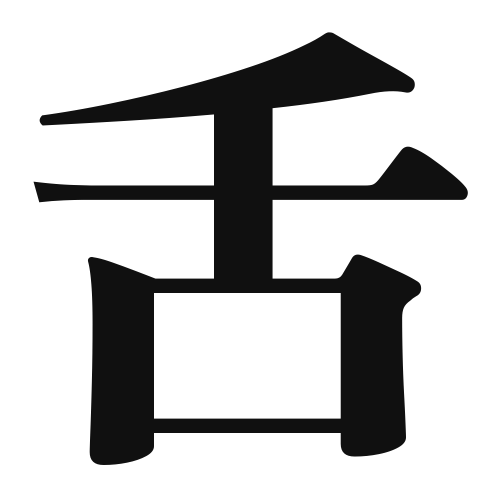1. Overview of Meaning
The kanji “舌” (shita) means “tongue” in English. It refers to the muscular organ in the mouth that is essential for tasting, swallowing, and speaking.
2. Formation and Radical
Formation of the Kanji: The kanji “舌” is a pictogram, originally depicting the shape of a tongue. It belongs to the category of ideograms as it represents a physical object.
Radical: The radical for “舌” is “舌” itself, which is used in other kanji related to the mouth or speech.
3. Examples of Usage
Common Words and Phrases: Some frequently used words that include “舌” are:
- 舌打ち (したうち, shita uchi) – clicking the tongue
- 舌先 (したさき, shita saki) – tip of the tongue
Example Sentences in Daily Conversation:
- 彼は舌を噛んでしまった。 (かれはしたをかんでしまった。) – He bit his tongue.
- この料理は舌に合う。 (このりょうりはしたにあう。) – This dish suits my taste.
4. Synonyms and Antonyms
Similar Kanji: A similar kanji is “口” (くち, kuchi), which means “mouth.” While “舌” specifically refers to the tongue, “口” refers to the entire mouth.
Opposite Meaning Kanji: There isn’t a direct antonym for “舌,” but “無口” (むくち, mukuchi) means “taciturn” or “silent,” which can be seen as the opposite in terms of speech.
5. Cultural and Historical Background
Relation to Japanese Culture: The tongue plays a significant role in Japanese culture, especially in the context of food and taste. The phrase “舌が肥える” (したがこえる, shita ga koeru) means “to have a discerning palate.”
Proverbs and Idioms: One common idiom is “舌を巻く” (したをまく, shita o maku), which means “to be astonished” or “to be speechless,” often used when someone is impressed by something extraordinary.
